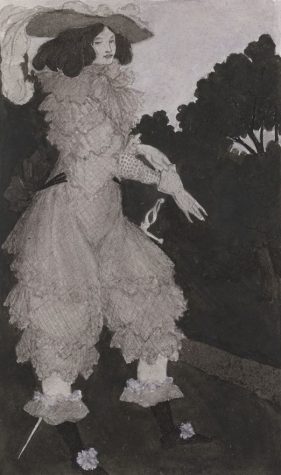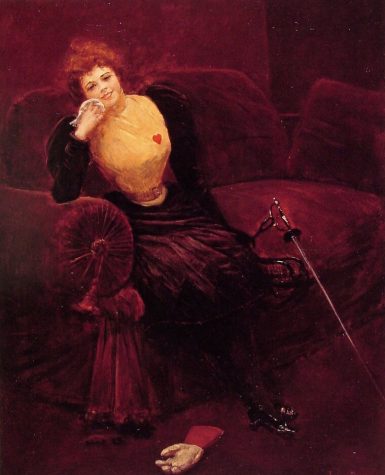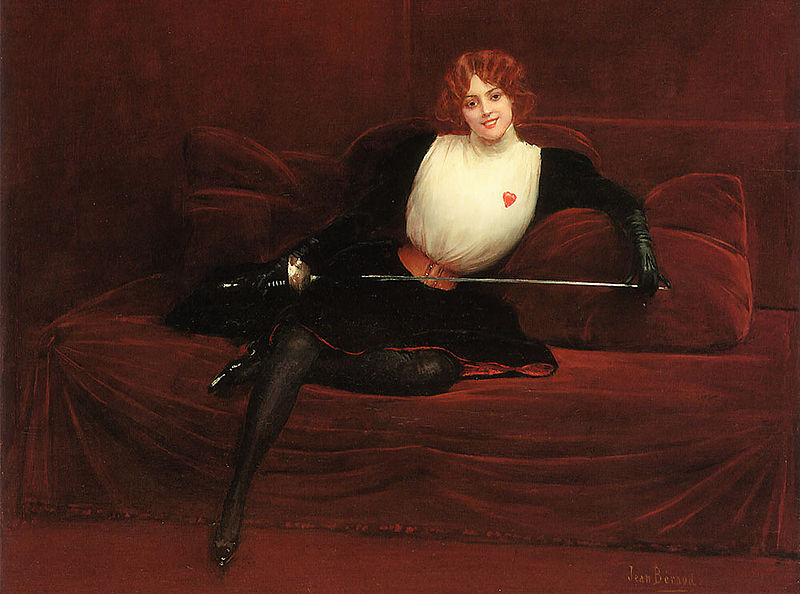The Life of Julie d’Aubigny
A 17th Century Tale of Non-Conformity and Queer Expression
L’Escrimeuse (The Swordswoman), taken from Wikimedia Commons
Julie d’Aubigny was a French opera singer and a skilled fencer in the late 17th century who led a chaotic, almost unbelievable life– between going on the run singing and fencing people for cash, to joining the opera and performing for the highest members of society at that time. On top of this, she was a figure who defied pre-established social norms though dressing publicly in men’s clothing and openly expressing her bisexuality, having several affairs with both men and women during her life.
Julie was born around 1673 as the child of Gaston d’Aubigny, secretary of the then “Master of the Horses,” Louis de Lorraine-Guise, who subsequently worked under the king of France, Louis XIV. During her time there, she was taught about fencing, excelling well enough at it that she could easily compete against other men who practiced there. At age 14, she ran away with a fencing assistant named Séranne after he went on the run over murdering someone in an illegal duel, marking the beginning of her on the run lifestyle. In order to cover for their expenses while traveling together, the two would give fencing demonstrations at local taverns and fairs where she would publicly adorned herself in men’s clothing during performances. At some point in their travels together, Julie and Séranne parted ways shortly before she decided to join the Marseille Opéra company and start up her career in opera.

Her performances attracted audiences and they would be enjoyed by many at her time there, with one of these witnesses being one unnamed daughter of a local merchant in the nearby area. Julie would proceed to seduce this girl, and the girl’s parents reacted to this romance by sending her off to a covenant and distancing the two lovers apart. In response, Julie proceeded to join the covenant, take the body of a recently deceased nun, and place that body in the room which her lover was staying in right before lighting the room on fire before the two escaped. For 3 months afterward, the two stayed on the run from authorities until their affair ended and the girl was returned back to her family. The aftermath of this escapade was that Julie was tried for kidnapping, body snatching, arson, and a sentence to death by fire for her crimes, but fortunately she wasn’t in the custody of authorities and thus could flee onward to France.
On her journeys, she met a man named Comte d’Albert, who challenged her to a duel not realizing she was a woman. Ultimately, he was completely bodied by her before being treated to his wounds, thus leading to the two becoming lifelong friends. While in the city of Poitiers, she took singing lessons from an actor named Maréchal, and then she found a new lover named Gabriel-Vincent Thévenard, another singer who traveled with her to France before they both joined the Paris Opéra, one of the most prosperous and primary operas for the entirety of France. Despite her criminal record, both her amazing singing skills, and Thévenard’s help, served to not only convince the company to hire Julie, but also convinced the king into pardoning Julie over her previous sentence back in Marseille.

During her time working for the Paris Opéra, Julie would perform for audiences such as the royal court and the king himself, while also appearing in many of the company’s major productions. Even in such a great position, she wouldn’t stop from getting into trouble outside of her time on stage. She would go to court for attacking her landlord, threaten to shoot the Duchess of Luxembourg, threatened to kill herself on one occasion, stab herself with a real knife during a performance, and one time she even embarrassed the Countess Marino while working under her as a maid briefly, secretly dressing her hair with radishes before a ball. All of these escapades are nothing, however, when compared to the time she attended a court ball, dressed to the nines in men’s clothes, and kissed a girl before having a 3 way duel between her and 3 different noblemen she upset, winning against all of them. Despite all of this chaos and lawbreaking, she would receive a second pardon for that night with help from the king’s brother. During her career, Julie fell in love with another woman named Madame la Marquise de Florensac, who she would describe as “the most beautiful woman in France.” They would live happily together for 2 years until Florensac died in 1705, leaving Julie heartbroken. She would retire from the opera soon after her death, and ironically, she would be pushed to join a covenant by her sorrow where she would die shortly after in 1707 at age 33.

Despite her tale ending in a rather disheartening fashion, Julie’s life story is an absurd journey filled with twists and turns, which captivates and shocks those who learn about it. She stands as an icon of nonconformity in her bold self expression and open bisexuality within a world that was much more hostile towards such things than it is now.




























